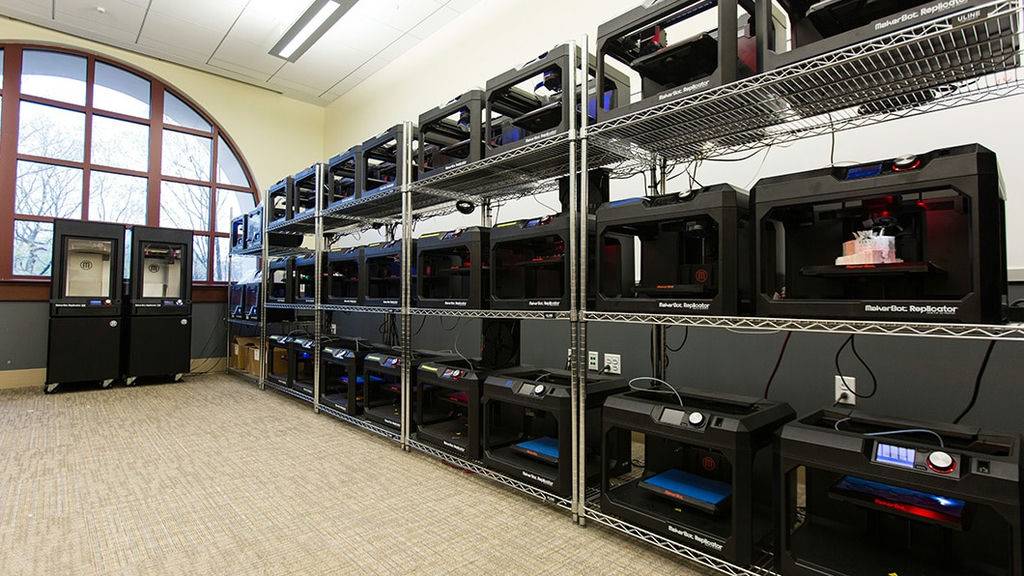U.S. based desktop 3D printer manufacturer MakerBot has opened its first Innovation Center in New York City at St. John’s University, Queens. In addition to the new hub, 3D printing has been incorporated into both humanities and science courses at St John’s University’s courses.
MakerBot Innovation Center
For MakerBot education is a key area. The MakerBot Innovation Center is an initiative designed to help universities set up their own makerspaces. In the case of St. John’s, MakerBot has provided over 20 3D Printers networked together via MakerBot Innovation Center Management Platform software. The Innovation Center package also includes installation, support, specialized racks, filament and several weeks of training sessions.

Offering a centralized and scalable 3D printing hub, the MakerBot Innovation Center is situated within the University’s Technology Commons. The Technology Commons encourages entrepreneurship and multi-disciplinary collaboration among students. Co-located with the new e-sports environment and virtual reality pods, the center adds to the engaging and interactive tech community.
Previously, MakerBot has set up Innovation Centers at Xavier University in Ohio, Florida Polytechnic University in Florida and Università Cattaneo LIUC in Italy.
Integrate 3D printing into the university environment
On top of academic research, St. John’s University has also integrated 3D printing into its courses such as Art & Design, Marketing, Foreign Language, Education, and Physiology. “3D printing in academia has become increasingly widespread as more schools look to combine new technologies into their curriculum to better prepare their students for the workforce,” said Nadav Goshen, CEO of MakerBot.
With 3D printing, students of the Art 1090 Jewelry design course can now explore design possibilities unavailable to traditional methods and materials. “Modeling in TinkerCad and Fusion 360, then printing at the Innovation Center with MakerBot printers, provides students with powerful tools enabling them to exercise their creative imaginations to the fullest,” said Ross Barbera, Associate Professor at the Department of Art and Design. 3D printing can also complement and enhance process-learning that involves iterative and flexible practices.

In the future, the University will offer classes on additive manufacturing and additive design approach, as well as an art elective in 3D printing and modeling.


